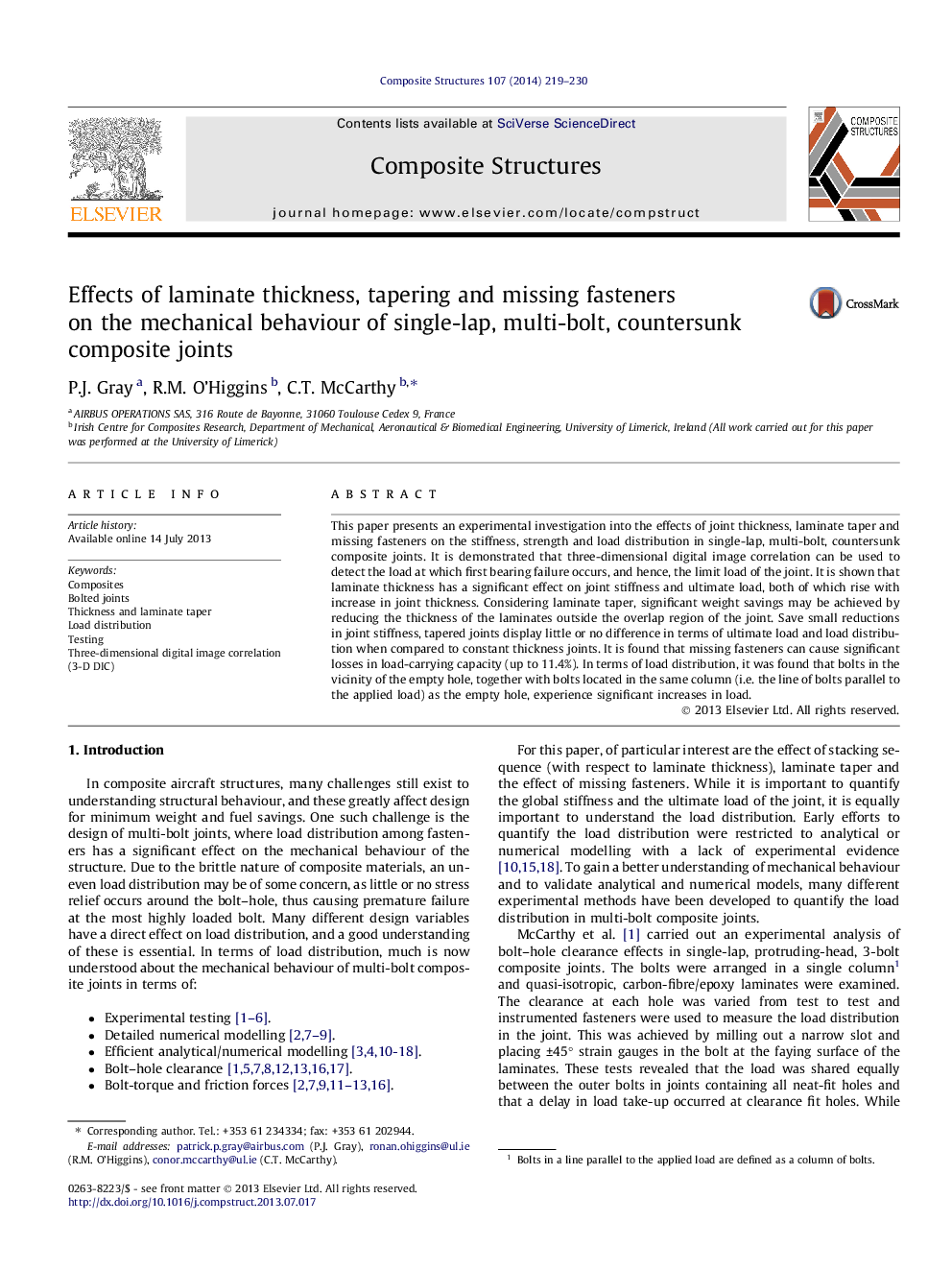| Article ID | Journal | Published Year | Pages | File Type |
|---|---|---|---|---|
| 6708428 | Composite Structures | 2014 | 12 Pages |
Abstract
This paper presents an experimental investigation into the effects of joint thickness, laminate taper and missing fasteners on the stiffness, strength and load distribution in single-lap, multi-bolt, countersunk composite joints. It is demonstrated that three-dimensional digital image correlation can be used to detect the load at which first bearing failure occurs, and hence, the limit load of the joint. It is shown that laminate thickness has a significant effect on joint stiffness and ultimate load, both of which rise with increase in joint thickness. Considering laminate taper, significant weight savings may be achieved by reducing the thickness of the laminates outside the overlap region of the joint. Save small reductions in joint stiffness, tapered joints display little or no difference in terms of ultimate load and load distribution when compared to constant thickness joints. It is found that missing fasteners can cause significant losses in load-carrying capacity (up to 11.4%). In terms of load distribution, it was found that bolts in the vicinity of the empty hole, together with bolts located in the same column (i.e. the line of bolts parallel to the applied load) as the empty hole, experience significant increases in load.
Related Topics
Physical Sciences and Engineering
Engineering
Civil and Structural Engineering
Authors
P.J. Gray, R.M. O'Higgins, C.T. McCarthy,
